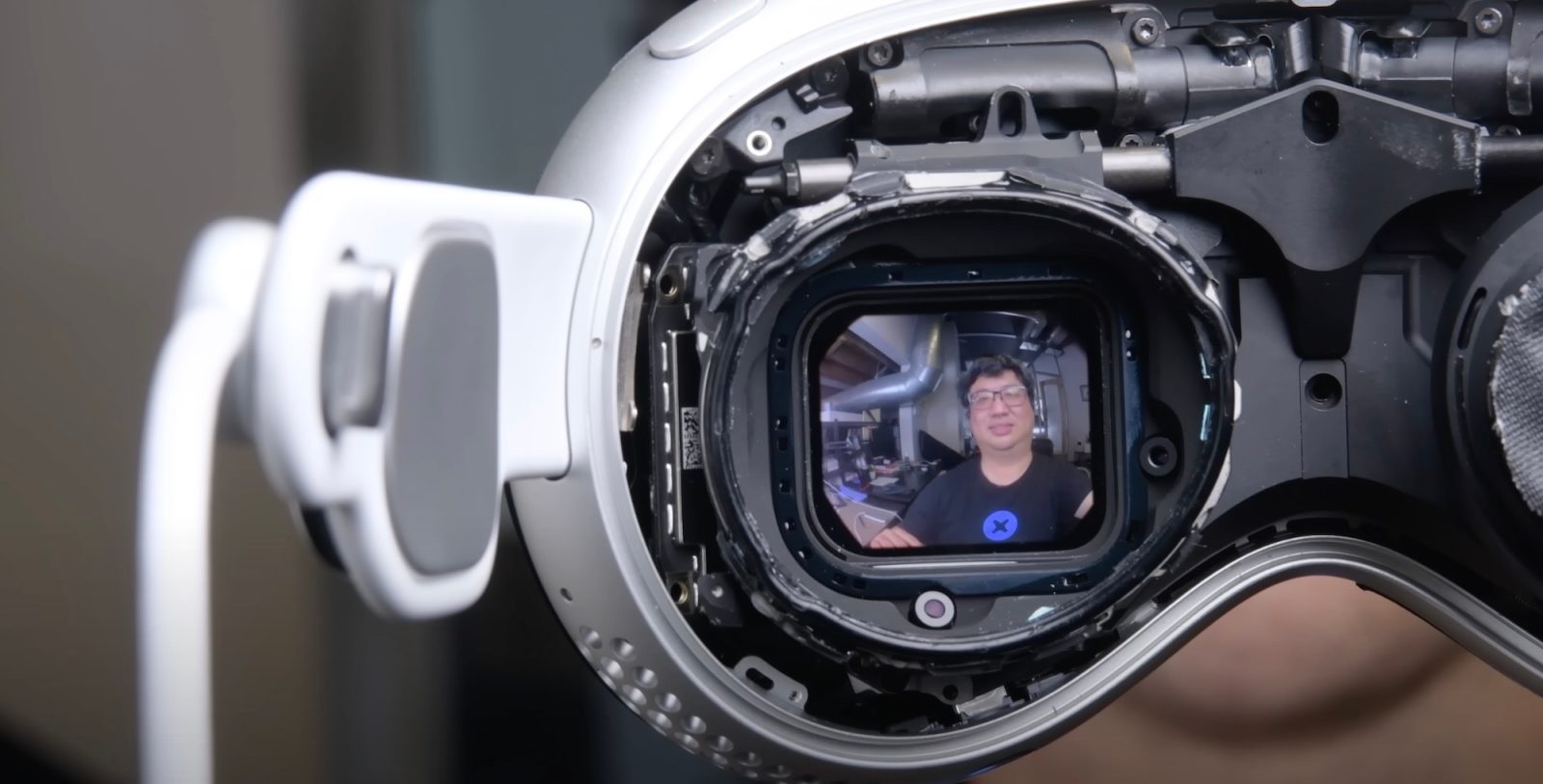
After sharing an initial video over the weekend, iFixit is back with part two of their Apple Vision Pro teardown. This time around, the focus in on the Vision Pro’s dual 4K screens, and iFixit questions whether the display are actually 4K resolution.
In the video, iFixit says that two Apple Vision Pro screen have a resolution of 3660 x 3200 pixels. 4K by definition is 3840 x 2160 pixels, so Vision Pro is ever-so-slightly lower in horizontal resolution and significantly higher resolution vertically.
Still, this difference doesn’t undermine the impressiveness of Vision Pro’s displays. As iFixit explains in the video:
These values don’t fulfill the 4K definition by commercial standards, but neither do 4K TVs. In short, each of these panels have more pixels than a 4K TV, but they aren’t technically 4K.
Now we can calculate the display panel’s pixel per inch, or PPI. If we do some math, convert some units, we calculate the Vision Pro panels are about 3,380 PPI.
You can fit 50 of these pixels in a single iPhone pixel.
That last line is absolutely mind-blowing: “You can fit 50 of these pixels in a single iPhone pixel.” Let that sink in.
There’s also the pixels-per-degree calculation, which some argue is more important for virtual reality headsets than pixels-per-inch.
Now, the math is super involved, but we can get some ballpark figures.
We’ve calculated that the Apple Vision Pro has an average PPD of somewhere around 34 pixels based on a field of view of 100 degrees, which appears to be accurate when measured against the Quest 3 in a very rudimentary test.
When compared to the Quest 3, the Apple Vision Pro’s field of view is slightly narrower, but the image quality is markedly higher.
And finally, iFixit gives Apple Vision Pro a repairability score of 4/10, which it describes as “Provisional.” There appears to be no parts pairing and a lot of the components are modular, iFixit explains:
While the device is difficult to get into, mainly thanks to Apple’s glue and glass school of engineering, I was astonished to find what appears to be a complete lack of parts pairing.
The earpiece speakers and straps are modular and don’t appear to be paired.
We did run into some issues when we’re swapping screens between one unit and another, but my gut feeling is that that has more to do with calibration than parts pairing.
The headband and light seal are also highly modular, not something to be taken for granted, looking at U-valve index with that non-removable back cushion.
As for the bad, we have an unrepairable front glass and OLED panel. The battery pack is also physically locked, making it impossible to open without causing damage.
It seems unlikely that Apple will provide parts or service manuals for this device outside of the battery pack and the light blockers.
Check out the full iFixit video below.
FTC: We use income earning auto affiliate links. More.

Comments